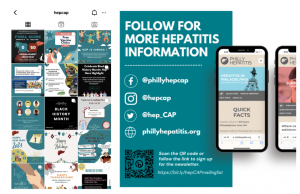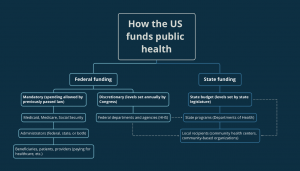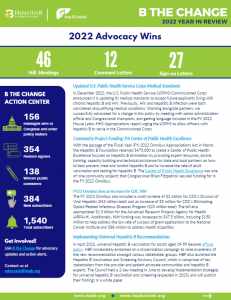
In a recent episode on the B Heppy podcast, Dr. Neehar Parikh, a hepatologist at the University of Michigan, discussed the link between hepatitis B and liver cancer, barriers to screening for liver cancer, and screening methods for liver cancer.
Hepatitis B and Liver Cancer
Most people are not unaware of the link between hepatitis B and liver cancer. Hepatitis B can cause liver cancer, especially when left untreated or unmonitored. The hepatitis B virus (HBV) can cause serious damage to liver tissue and result in the growth of tumors that may become dangerous over time. This is why doctors recommend patients living with hepatitis B to continue to monitor their liver health and take treatment if necessary to prevent the progression to liver cancer. The best way to check for cancer is by screening. It is recommended to get liver cancer screening (usually through an ultrasound that looks at damaged tissue or abnormal cell growth) once every six months.
Barriers to Liver Cancer Screening
There are several barriers to liver cancer screening at the provider and patient levels. For providers, many times liver cancer screening is not prioritized when compared to other types of cancer screening programs. This is partially due to the limited evidence on liver cancer screening benefits (even though data exists to show that liver cancer screening is valuable, it’s not as strong as the evidence used to back up other cancer screening initiatives like colonoscopy or breast cancer screening). This makes liver cancer a less valuable option for providers to recommend to their patients. Providers are also not always following recommendations or guidelines from liver societies on hepatitis B management and liver cancer surveillance. Liver cancer screening is also not included in the United States Preventative Services Taskforce (USPSTF), which is a tool used by most providers in the U.S. to recommend preventative services to their patients.
From the patient’s perspective, liver cancer screening is not always discussed by providers. For people living with chronic hepatitis B, many are not aware of the link between the virus and liver cancer. They are less likely to ask more questions about monitoring their liver health if the option or recommendation for screening is never brought up in a conversation with their providers. For many people who need liver cancer screening, they have limited access to care (loss to follow-up, lack of health insurance coverage, etc.). Limitations with the electronic health records (EHR) system is a challenge for patients who may find it difficult to schedule appointments (sometimes patients are not sent reminders to get ultrasounds).
For people living with hepatitis B, liver cancer is a serious health risk. It is crucial to make sure patients are aware of the link between hepatitis B and liver cancer, the role of screening in early diagnosis and prevention of advanced tumors, and the importance of monitoring liver health as recommended by liver societies and guidelines on liver cancer surveillance.
Listen to Dr. Parikh’s full episode on B Heppy here: https://bheppy.buzzsprout.com/1729790/14248470-barriers-to-liver-cancer-surveillance-with-dr-neehar-parikh.
Additionally, the Hepatitis B Foundation recently launched a Learn the Link campaign to help spread information on the link between hepatitis B and liver cancer. View all about the campaign and get access to free resources here.: https://www.hepb.org/research-and-programs/liver/hbv-liver-cancer-connection/




















 Yufei Zhao is 45 years old and lives with his family in Philadelphia, Pa. Yufei discovered that he had hepatitis B when he attended a community health fair with his family. Even though he was instructed to talk about his diagnosis with a doctor and learn more about possible treatment options, Yufei decided to do nothing as he did not feel sick. While he has health insurance through his employer, he never utilizes any health care services. He often skips annual wellness visits as he says he “never gets sick.”
Yufei Zhao is 45 years old and lives with his family in Philadelphia, Pa. Yufei discovered that he had hepatitis B when he attended a community health fair with his family. Even though he was instructed to talk about his diagnosis with a doctor and learn more about possible treatment options, Yufei decided to do nothing as he did not feel sick. While he has health insurance through his employer, he never utilizes any health care services. He often skips annual wellness visits as he says he “never gets sick.”  A few weeks ago, Yufei’s family noticed that he has been skipping meals frequently saying he’s full or not hungry. At his daughter’s urging, he decided to go for a visit. After conducting some more tests, his doctor explained that the chronic infection with the hepatitis B virus had progressed substantially, and he had developed cirrhosis. After an MRI diagnosis, it was revealed that Yufei had liver cancer
A few weeks ago, Yufei’s family noticed that he has been skipping meals frequently saying he’s full or not hungry. At his daughter’s urging, he decided to go for a visit. After conducting some more tests, his doctor explained that the chronic infection with the hepatitis B virus had progressed substantially, and he had developed cirrhosis. After an MRI diagnosis, it was revealed that Yufei had liver cancer The Hepatologist (liver doctor) explained to Yufei that the liver is an important organ and acts as a cleaning system for the body. It removes toxic waste, purifies blood, and helps to digest food properly. When the virus entered the liver, it made many copies of itself and started attacking healthy liver cells. This led to inflammation and weakened the ability of the liver to carry out its most essential tasks. Because he was never monitored for hepatitis B, the virus allowed tumors to grow in the liver which caused the cancer. When the tumors grow in size or number, it eventually spreads to other parts of the body and disrupts other vital processes as well.
The Hepatologist (liver doctor) explained to Yufei that the liver is an important organ and acts as a cleaning system for the body. It removes toxic waste, purifies blood, and helps to digest food properly. When the virus entered the liver, it made many copies of itself and started attacking healthy liver cells. This led to inflammation and weakened the ability of the liver to carry out its most essential tasks. Because he was never monitored for hepatitis B, the virus allowed tumors to grow in the liver which caused the cancer. When the tumors grow in size or number, it eventually spreads to other parts of the body and disrupts other vital processes as well. The doctor mentioned that liver cancer is often called the silent disease because symptoms may not always be present. Even with a hepatitis B, a person could look or feel okay but that does not mean the virus isn’t active and causing damage. When the symptoms do show up, it might be too late to prevent liver cancer. After discussing his options with the doctor, Yufei learned that the best treatment for him was to get a liver transplant.
The doctor mentioned that liver cancer is often called the silent disease because symptoms may not always be present. Even with a hepatitis B, a person could look or feel okay but that does not mean the virus isn’t active and causing damage. When the symptoms do show up, it might be too late to prevent liver cancer. After discussing his options with the doctor, Yufei learned that the best treatment for him was to get a liver transplant. 